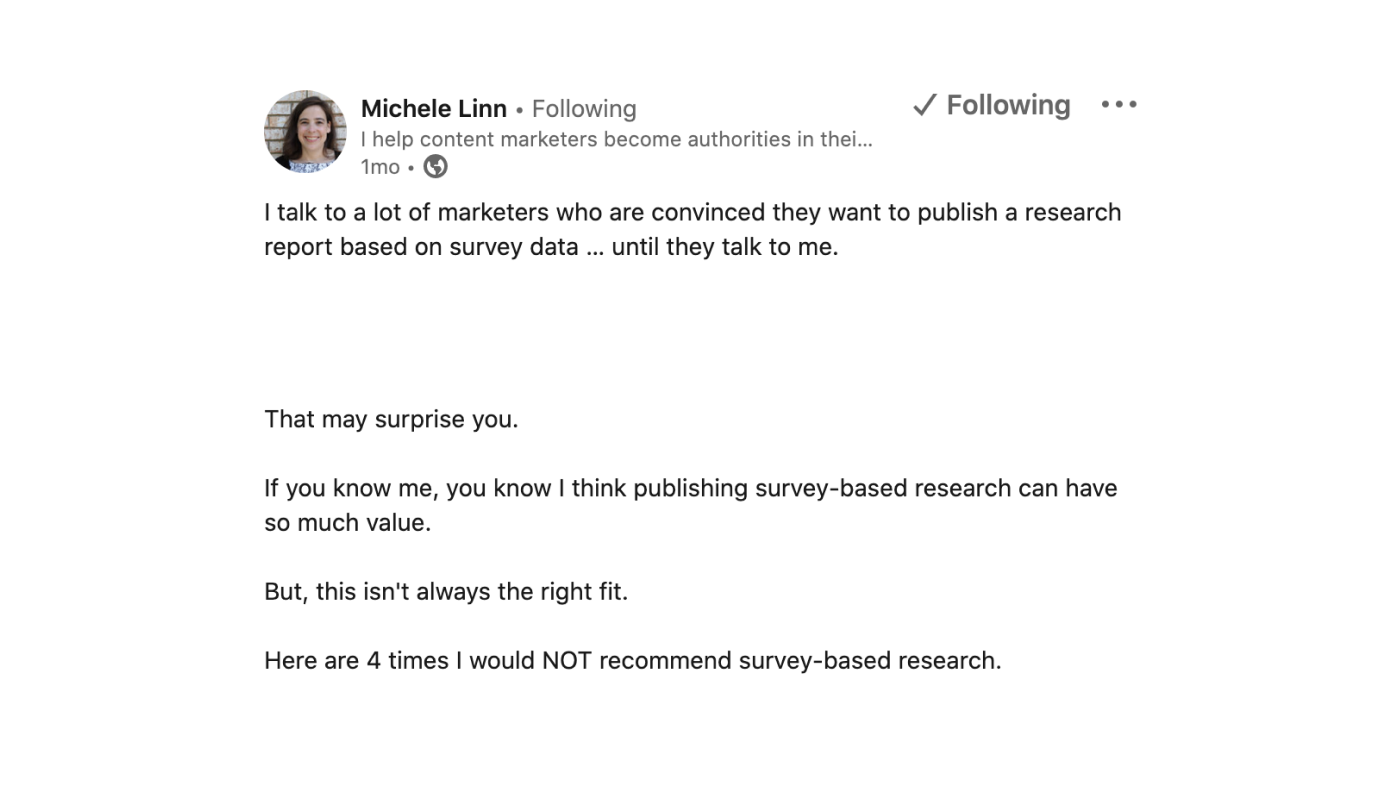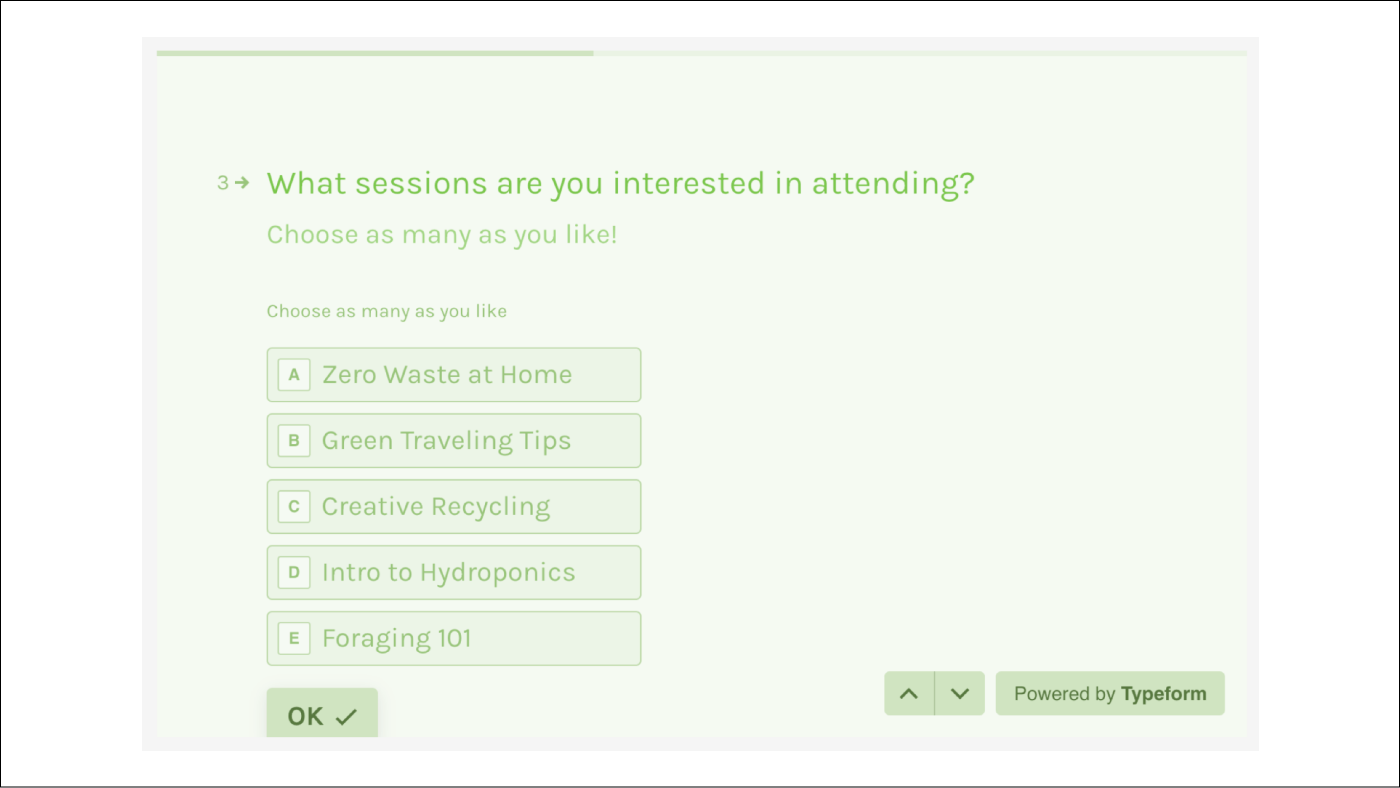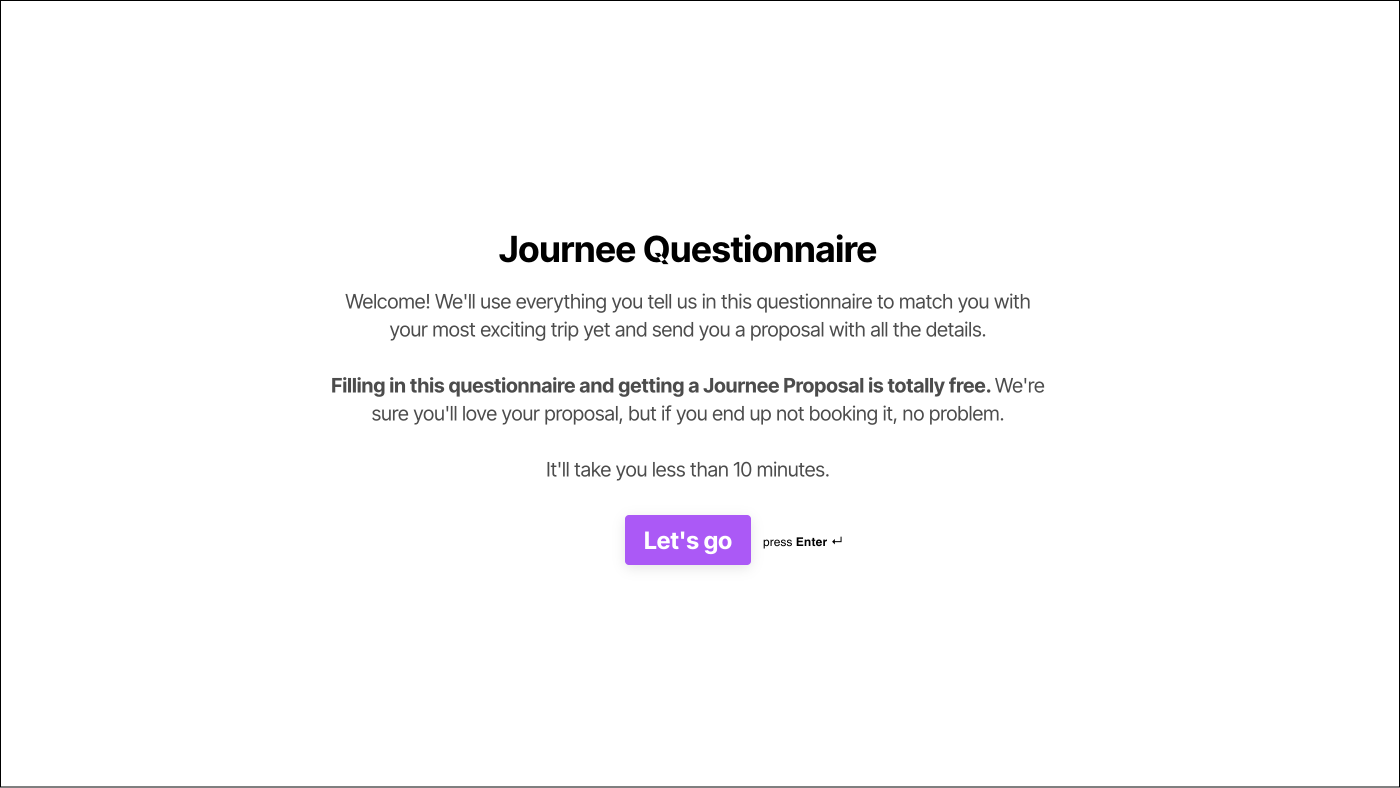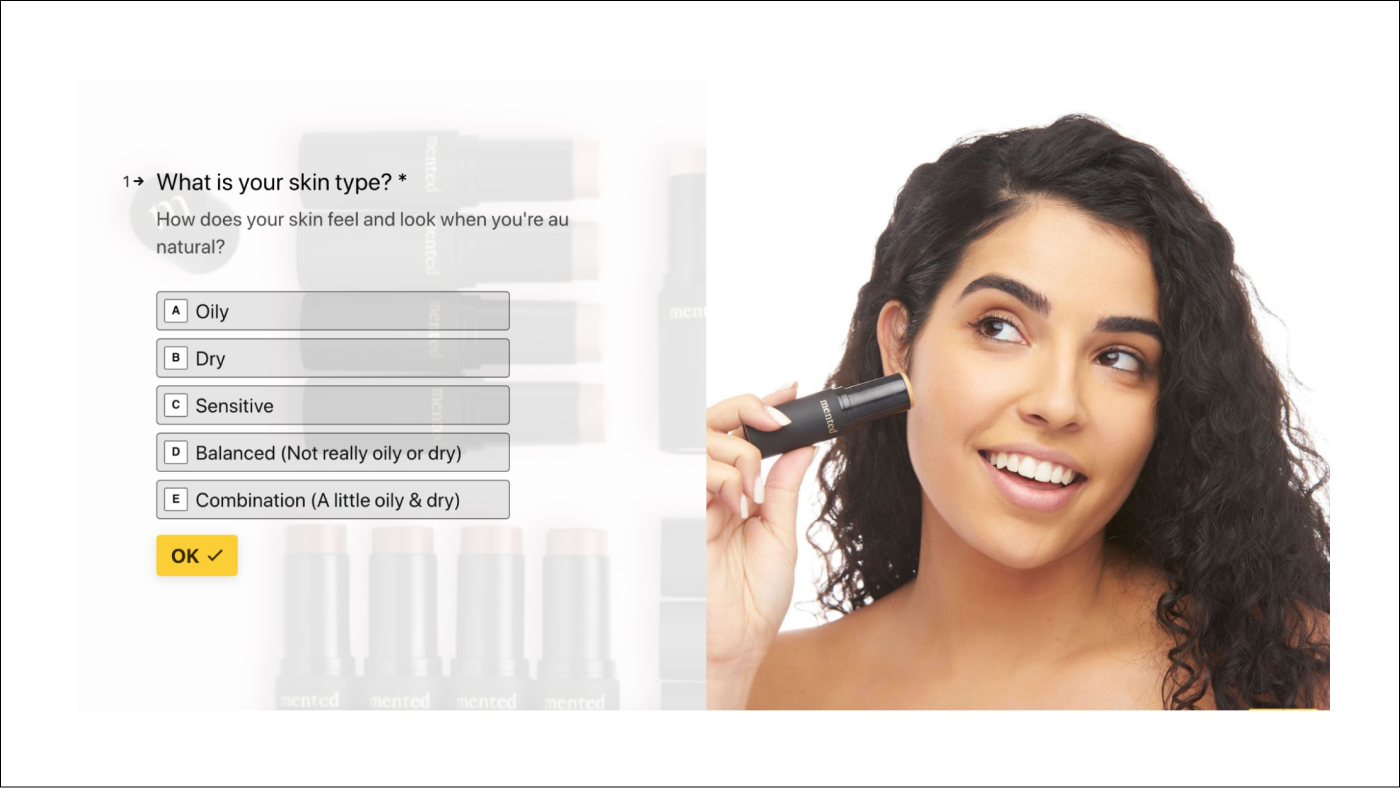Tips
When NOT to use surveys for marketing
Learn about why and how marketing experts use forms and surveys—or rather, when they don’t use them.

Is there anything more intriguing than a “Do Not Enter” sign?
When someone tells us what not to do—don’t open this box, don’t eat this forbidden snack, don’t look behind this closed door—our curiosity kicks into high gear. We can’t not investigate, right?
Enter Michele Linn’sLinkedIn post about when not to use survey-based research. As an expert in original research with two and a half decades of marketing and content experience, Michele knows what she’s talking about.
Things got even juicier in the comments. Erin Balsa, B2B thought leadership and content marketing pro, chimed in with a different opinion about using surveys to sell your product.
We had to know more, so we reached out to them to learn more about why and how these experts use forms and surveys—or rather, when they don’t use them.
Don’t use forms or surveys if…
At Typeform, we love talking about how powerful forms and surveys are valuable for every part of your business.
We’ve shared the right kinds of questions to ask and how to use conversational forms to grow your business.
But Michele and Erin got us thinking about the flip side of the equation—are there times when using a form isn’t the way to go?
Read on for five cases when you shouldn' t use surveys and what you should do instead.
1. You just want to do a sales pitch or product placement
It’s a tale as old as time: You download an industry report with an appealing title that suggests you’ll gain valuable insights.
But when you start reading, the research is heavily skewed and suggestive, with copy that only exists to tell you how great the company’s product is—with little to no value in sight.
Do those experiences endear you to the company that published the report? Probably not.
According to Michele, that’s because you shouldn’t use surveys to support your thinly veiled product pitch.
“If your goal is to use a survey to show why your audience needs your product? Well, just don’t,” she says. “Readers will see right through this, and you’ll lose credibility.”
You need to make sure your product isn’t the “punchline” of the survey, according to Michele Linn.
Do this instead:
Rather than using surveys to craft a heavy-handed sales pitch, Erin collects survey data that can validate product features—then uses survey reports to drive hand-raiser leads and product signups. When positioned well, a report can offer value to your target audience and show your solution’s advantages.
Case in point: Erin helped one EdTech client create a survey report covering the organizational education strategies and practices that drove positive business results like decreased customer churn and increased partner success. Then, the report took it one step further by showing the tools and platforms they used to accomplish their work.
This data shaped a narrative that educated the audience without simply hawking the product. “Now we have a story that shows platforms like ours, with functionality like ours, as critical to driving those business results,” Erin says.
In short, use surveys to gather data that answers your audience’s questions about their profession, industry, and day-to-day priorities. Aim to be relentlessly helpful—not to bait and switch your audience and pitch them when they think they’re opting into thoughtful research.
(PS: If you’re keen to show the hard facts about how real people use your amazing product? Your best bet is to invest in your case study library.)
2. You’re trying to gather behavioral data
We’d all like to think we know ourselves pretty well, right?
But when asked to report on our own behaviors and habits, we can be quite out of touch with reality.
For instance, a 2018 study asked college students to self-report their smartphone usage, which they underestimated by 40%. A 2022 study of adolescent social media usage also found similarly significant self-reporting errors.
Cell phone usage is just one example—but it reminds us that, in general, we may not know or report our behavior as accurately as we think.
According to Michele, this makes surveys a less-effective tool for understanding behavior. “What people actuallydo is very different from what they thinkthey do,” she says.
It’s cliché but true—actions really do speak louder than words.
Surveys are a great tool for asking people what they think—gathering their opinions, understanding their problems, and seeing the world through their eyes.
“Surveys are great if you want to study attitudes or what someone believes to be true. What do people think about a topic? What do they plan to do in the future?” — Michele Linn
But when it comes to using surveys to ask people what they actually do, you’d be better off looking at other data sources.
Let’s say you ask a survey question about how annoyed people feel toward unwanted emails.
Their responses could indicate that their inboxes make them want to throw their laptop across the room, but unsubscribe rates might tell a very different story.
So while self-reported data has value for understanding sentiment and audience emotions, that’s a different kind of value than what behavioral data offers.
Want to know how often customers log onto your platform? Asking them won’t give you the answer with pinpoint accuracy—they’ll likely underestimate or overestimate it. You’re better off looking at platform analytics.
Do this instead:
It might seem obvious, but to understand behavior, look at user data.
Use surveys to gather how your audience thinks and feels (which is also a great place to identify their frustrations and pain points to bolster your messaging and positioning).
Then, if you have the time and resources, conduct a study that compares survey data with user data to see where they differ. You’ll have a powerhouse team of audience insights.
3. You’re trying to do a super deep dive on a certain topic
In the past, someone with a survey clipboard on a street corner—asking for “just a few minutes of your time”—might make the everyday pedestrian turn the other way.
Luckily, living in the digital age means that filling out surveys and forms is easier and more enjoyable than ever before.
But the fact remains that most people still aren’t too keen to give a survey much more than a few minutes of their time. (Although it helps if your form is user-friendly and fun to fill out—and people-friendly forms are exactly what we build at Typeform.)
So what happens when you’re ready to go all-in on a topic with a survey, or you want to know everything someone has ever thought about a particular idea?
It’s sad but true—the people taking your survey don’t care about your topic as much as you do. Most people are simply not ready to jump into the deep end with you, so you shouldn’t use surveys to ask swaths of detailed or open-ended questions.
If your survey-taker feels fatigued partway through a hefty form, they’re likely to provide less-than-thoughtful (and less-than-helpful) responses. Or they might bail on the form altogether.
Neither outcome is ideal—so don’t use surveys to gather encyclopedic levels of knowledge.
Do this instead:
Keep your surveys short and to the point—Michele recommends around five to seven minutes long. Features like Typeform’s progress bar can also help keep users engaged and excited until the form’s finish line.
Make the survey experience enjoyable for your user. Michele says that you should avoid having people “think too much.” Instead, simplify multiple-choice options and word questions in the same way your audience would.
“If you can’t ask a question simply and easily, it’s possible a survey is not the best place to do it.” — Michele Linn
One last thought on this topic: You don’t have to avoid open-ended questions altogether. Just don’t bog down your survey—or your user—with them throughout.
Michele advises asking easier questions upfront and saving one or two—but no more than three—tougher, open-ended questions for last.
4. You’re trying to keep your audience small
Listen, everyone’s marketing goals are a little different. So we won’t judge you if you don’t want to massively grow your customer base.
Forms help you build an audience and recruit more people to your cause. They offer you the potential to connect with lots of future customers and greatly grow your reach.
Beyond surveys themselves, you can transform the data you capture into valuable insights that shape your strategy internally and capture the attention (and information) of whole new audiences.
But if this doesn’t sound like you, and you aren’t on the lookout for ways to grow and expand powerfully, then forms probably aren’t for you.
(Now, if you are ready to attract new leads, make new connections, and drive new revenue… well, that’s a different story.)
Do this instead:
Irony aside, go wild using forms to grow your audience. Let your Ideal Customer Profile (ICP) know you’re listening to them, and use their responses to understand them better. Get creative with giveaways, quizzes, and interactive experiences that show off your brand.
Ready to use survey data to keep growing? Craft meaningful studies and research reports based on the data you’ve gathered that show your audience you understand them.
“I use surveys most often to ask an audience questions for the purpose of creating original research reports that build brand awareness, drive press mentions and backlinks, generate leads, enable sales conversations, and validate company messaging.” — Erin Balsa
From there, the name of the survey game is repurposing. Take it from Michele, who says that just one research report can be repurposed for a year’s worth of content.
Erin recommends using forms to understand and capture intent—learn why someone didn’t take action when they’re leaving a page, or use a popup to drive someone from a blog post to your newsletter sign-up.
Forms don’t just drive growth for its own sake, either. According to Erin, they also “enable your audience to opt into content and events on their terms.”
That sure sounds like the path to an engaged and excited audience to us.
5. You’d rather keep customers at arm’s length
Forms offer engaging and even intimate ways to engage with your customers. They start a two-way conversation with your ICP, and the back-and-forth exchange links you together in a way that other marketing tools just, well, don’t.
Erin agrees. She says that forms “help you understand and serveyour audience.”
But if that’s not what you’re in for and you’d rather keep a healthy distance between you and your customers, then forms aren’t for you. (Might as well leave the lead qualification to the sales team, right?)
Do this instead:
Rather than keeping your audience at a distance (which we’re pretty sure you don’t want to do), use forms to engage current and future customers better than ever before.
Gather product feedback and learn what your customers actually think using interesting, easy-to-use forms—then fine-tune your messaging and segment your audience in all-new ways.
Inspire new levels of brand loyalty with forms and quizzes designed to guide leads to the right product for them. Use the data gathered from forms to spark content your customers care about and make product improvements that drive value.
Forms let you pull your customers (and leads) close and convert awareness into interest into loyalty.
When you do use forms…
So, forms aren’t for sales pitches, collecting true behavioral data, doing a deep dive, keeping your circle small, or maintaining distance from prospects.
But they are essential tools for starting a dialogue with customers and gathering actionable insights. When you do use forms, make sure you:
- aim to be conversational and engaging
- use them to understand your customers’ thoughts and feelings
- spring for a form-creation tool with powerful integrations
We' ve built Typeform to be beautiful, powerful, and personable. Find out how you can use forms to deepen your connections with customers and expand your reach. Get started for free.






.png)

